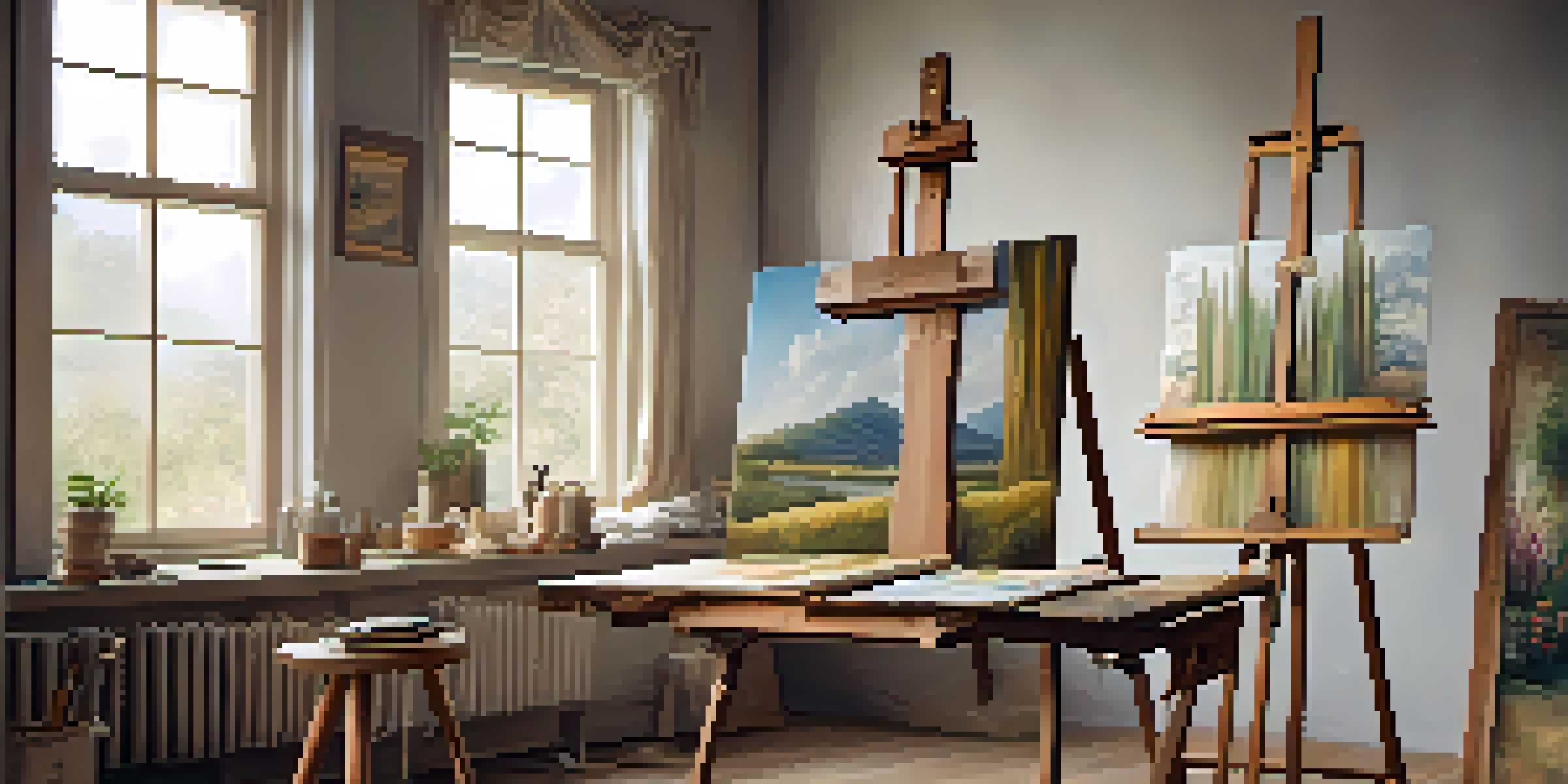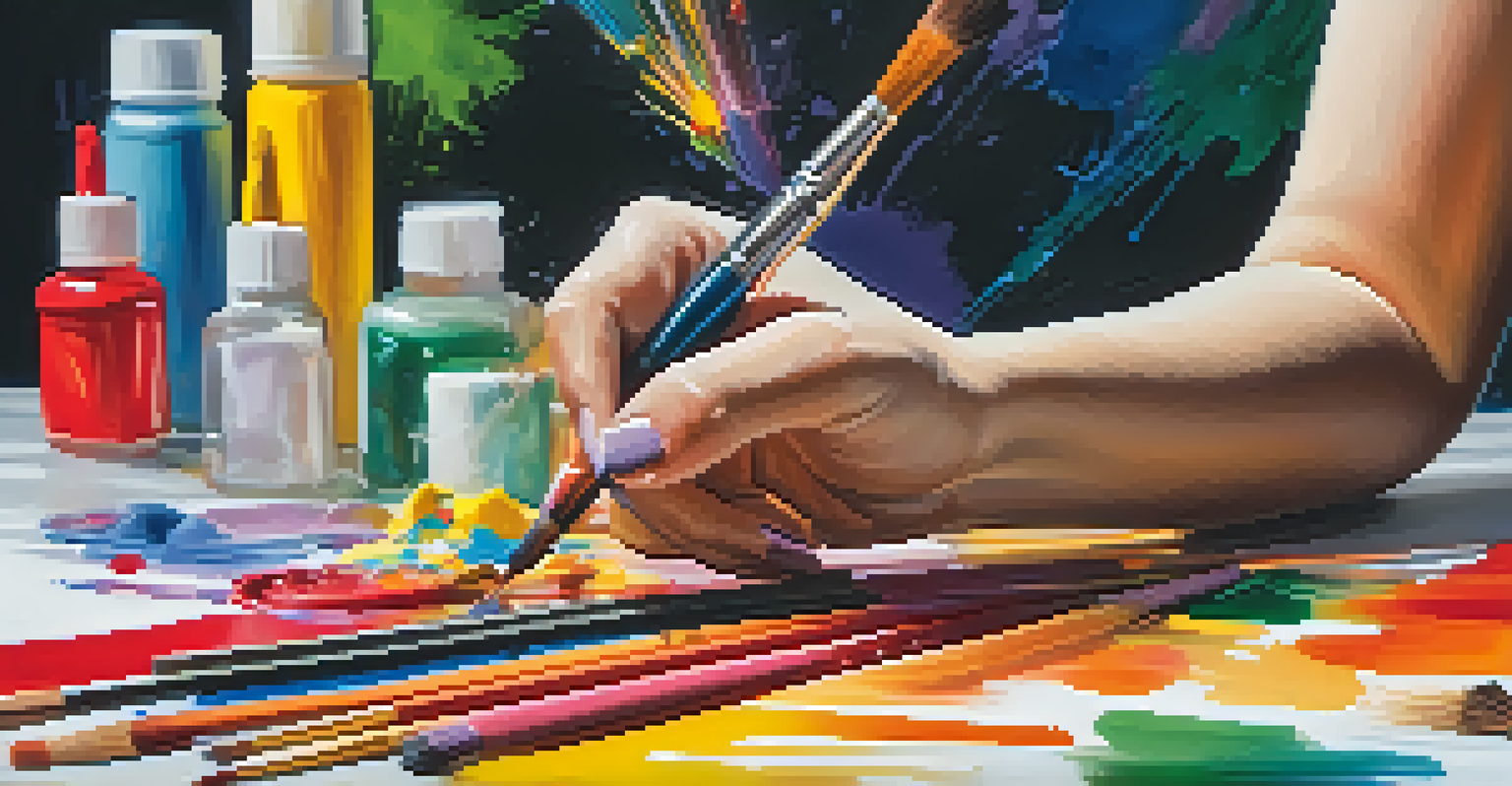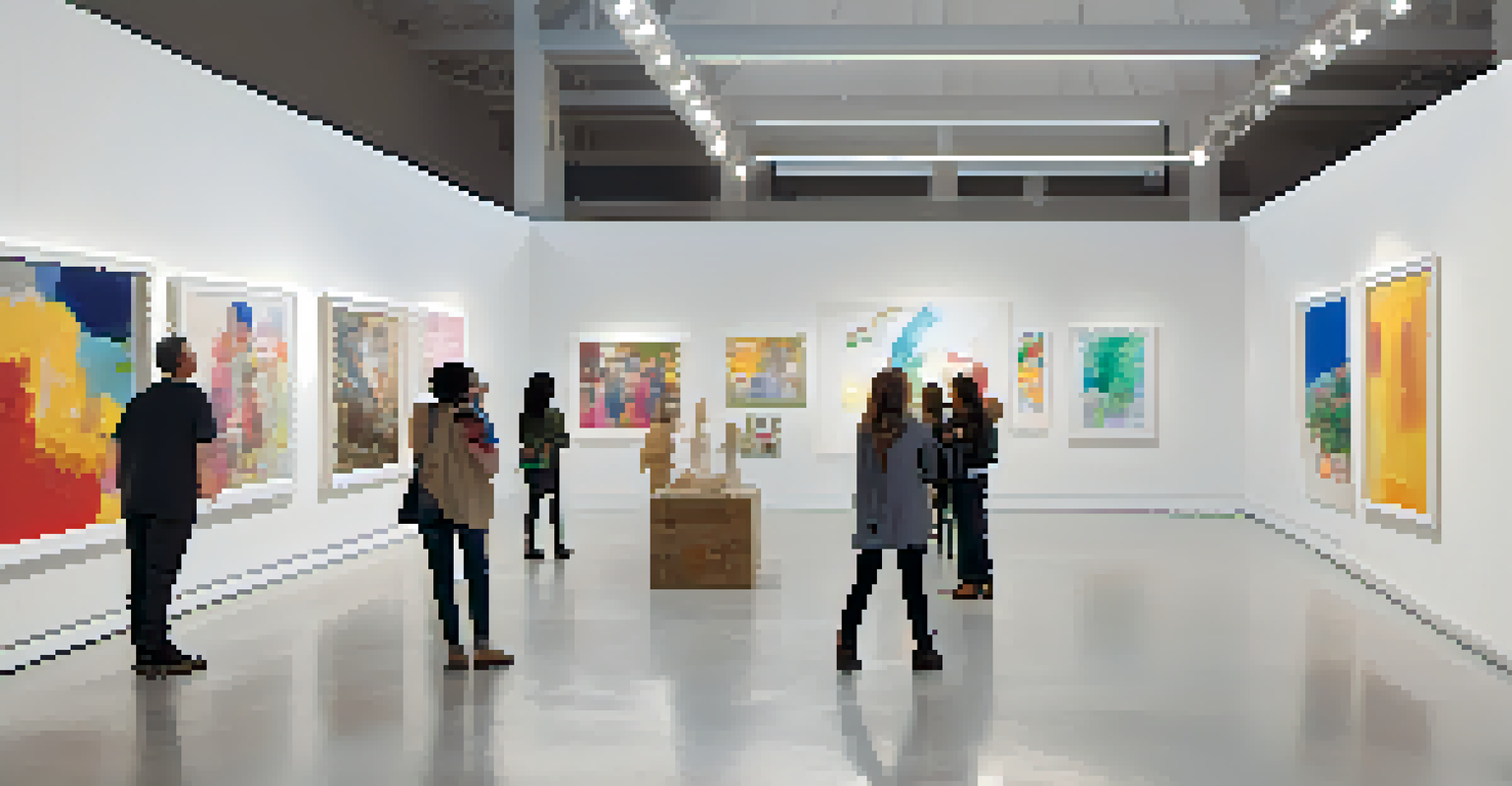Exploring the Legacy of Women Painters in Art History

The Underrepresentation of Women in Art History
Art history has often sidelined the contributions of women artists, leading to a skewed understanding of the field. Despite significant achievements, many female painters remained anonymous or were overshadowed by their male counterparts. This lack of recognition has contributed to a historical narrative that overlooks the rich tapestry of women's creativity and influence.
Women have been the backbone of art history, yet their contributions have often been overlooked.
For instance, artists like Artemisia Gentileschi and Sofonisba Anguissola were groundbreaking in their time but often went unmentioned in mainstream discussions. Their works not only challenged societal norms but also showcased the unique perspectives women brought to art. Highlighting these artists is crucial in acknowledging the full spectrum of art history.
In recent years, there has been a renewed interest in these figures, prompting galleries and museums to curate exhibitions that focus on women's contributions. This shift is essential for redefining the narrative of art history and ensuring that future generations appreciate the diverse voices that have shaped it.
Pioneers of the Past: Early Women Artists
Long before the modern feminist movement, women were making their mark in the art world. Artists like Judith Leyster and Louise Élisabeth Vigée Le Brun not only excelled in their craft but also navigated the challenges posed by a male-dominated society. Their determination and skill paved the way for future generations of women artists.

Leyster, known for her lively genre scenes, was one of the first female painters to join the Haarlem Guild of St. Luke, showcasing her exceptional talent. Similarly, Vigée Le Brun gained fame as the official portraitist of Marie Antoinette, breaking through numerous barriers to achieve success. Their stories remind us that the struggle for recognition and respect in the arts is not a new phenomenon.
Women Artists Historically Overlooked
Art history has often marginalized women artists, leading to a skewed understanding of their significant contributions.
By acknowledging the contributions of these early pioneers, we can better appreciate the groundwork they laid for contemporary artists. Their legacy inspires modern women painters to pursue their passions and challenge the status quo in the art world.
The Role of Women in the Impressionist Movement
The Impressionist movement of the late 19th century was a pivotal moment for women artists. Figures like Berthe Morisot and Mary Cassatt brought their unique perspectives to a movement often dominated by male artists. Their works captured intimate moments and the subtleties of everyday life, offering a fresh lens on the world around them.
I am not a woman artist, I am an artist who happens to be a woman.
Morisot, who was closely associated with the Impressionists, often depicted domestic scenes and the lives of women, challenging the traditional themes prevalent in art at the time. Cassatt, an American artist, focused on the bonds between mothers and children, highlighting the emotional depth that female artists could convey. Their contributions not only enriched the movement but also expanded the narrative of what art could represent.
By featuring women in their artwork, Morisot and Cassatt contributed to the evolving discourse on gender and representation in art. Their legacies continue to inspire modern artists to explore personal and societal themes, reminding us of the value of diverse perspectives in creative expression.
The Impact of the Feminist Art Movement
The feminist art movement of the 1970s marked a significant turning point in the recognition of women artists. This movement sought to address the systemic inequalities faced by female creators in the art world, advocating for equal representation and opportunities. Artists like Judy Chicago and Miriam Schapiro played central roles in this transformative era.
Judy Chicago's iconic installation, 'The Dinner Party,' became a symbol of feminist art, celebrating women's contributions throughout history. Meanwhile, Miriam Schapiro co-founded the pioneering feminist art program at the California Institute of the Arts, fostering a new generation of women artists. Together, they challenged traditional notions of art and pushed for a broader understanding of creativity.
Feminist Art Movement's Impact
The feminist art movement of the 1970s played a crucial role in advocating for equal representation of women artists in the art world.
The feminist art movement not only highlighted the work of women artists but also encouraged critical dialogues around gender and identity. By examining their contributions, we can see how this movement has shaped contemporary art and inspired ongoing efforts for equality in the creative landscape.
Contemporary Women Artists Redefining Art Today
Today, women artists continue to redefine the boundaries of art across various mediums. From painting to installation and digital art, female creators are making waves and garnering significant attention in the art world. Artists like Yayoi Kusama and Kara Walker exemplify this trend, using their work to address complex societal issues.
Yayoi Kusama, known for her immersive installations and polka dot motifs, explores themes of mental health and obsession, inviting viewers to engage in her unique artistic vision. Similarly, Kara Walker's powerful silhouettes confront historical narratives surrounding race and gender, challenging audiences to reflect on uncomfortable truths. Their innovative approaches demonstrate the diverse ways women artists are reshaping contemporary art.
As these artists gain prominence, they inspire future generations to express themselves and confront societal norms. Their works serve as reminders that art can be a powerful tool for change, encouraging dialogue and fostering understanding in an increasingly complex world.
The Importance of Representation in Art Education
Representation matters not only in the art world but also in art education. Ensuring that students learn about female artists and their contributions is essential for fostering a more inclusive understanding of art history. By integrating diverse voices into the curriculum, educators can inspire students to appreciate the richness of artistic expression.
Art programs that highlight women artists encourage young creators to explore their own identities and experiences through their work. When students see relatable figures in the art world, they are more likely to envision themselves as artists, breaking down barriers and challenging stereotypes. This shift in perspective can lead to a more vibrant and diverse art scene.
Contemporary Women Redefining Art
Today, female artists like Yayoi Kusama and Kara Walker are reshaping contemporary art by addressing complex societal issues through their work.
Furthermore, fostering discussions around gender and representation in art education can empower students to critically engage with the artworks they encounter. By cultivating an environment that values diversity, we can promote a future where all voices are heard and celebrated in the arts.
Celebrating Women Artists: Exhibitions and Initiatives
In recent years, numerous exhibitions and initiatives have emerged to celebrate the work of women artists. Museums and galleries are increasingly recognizing the need to highlight female creators, often dedicating entire exhibitions to their contributions. These efforts play a crucial role in reshaping the narrative of art history and ensuring that women's voices are not forgotten.
For example, the 2019 exhibition 'Women Artists of the New York School' at the National Museum of Women in the Arts spotlighted influential female artists from the mid-20th century. Such initiatives not only bring attention to overlooked figures but also serve as inspiration for contemporary artists. They remind us of the importance of inclusion in the arts.

Additionally, organizations like the Women's Caucus for Art continue to advocate for women's representation and support emerging female artists. By celebrating their work, we can foster a greater appreciation for the diverse contributions women have made to the art world, ensuring that their legacies endure for future generations.